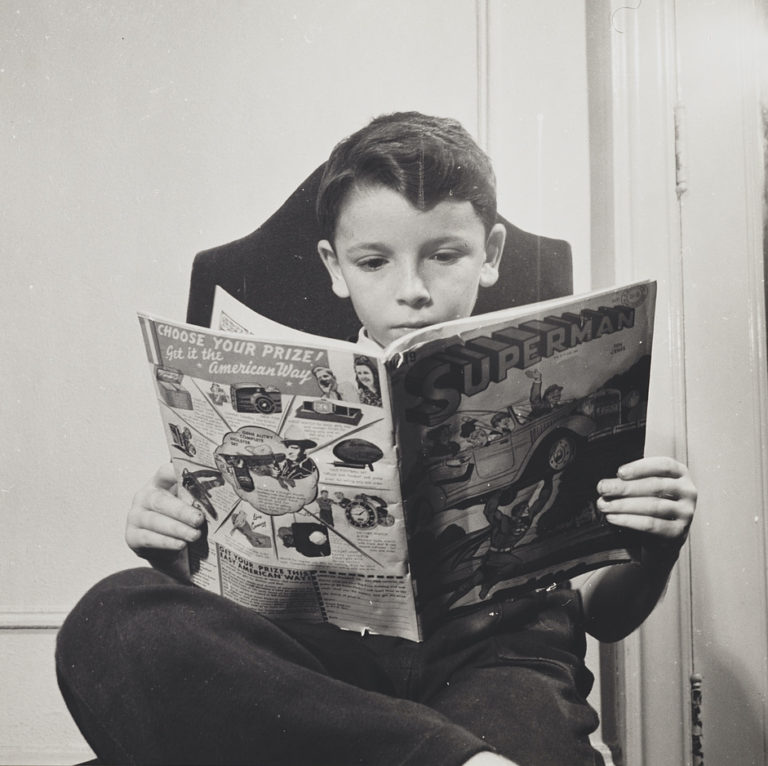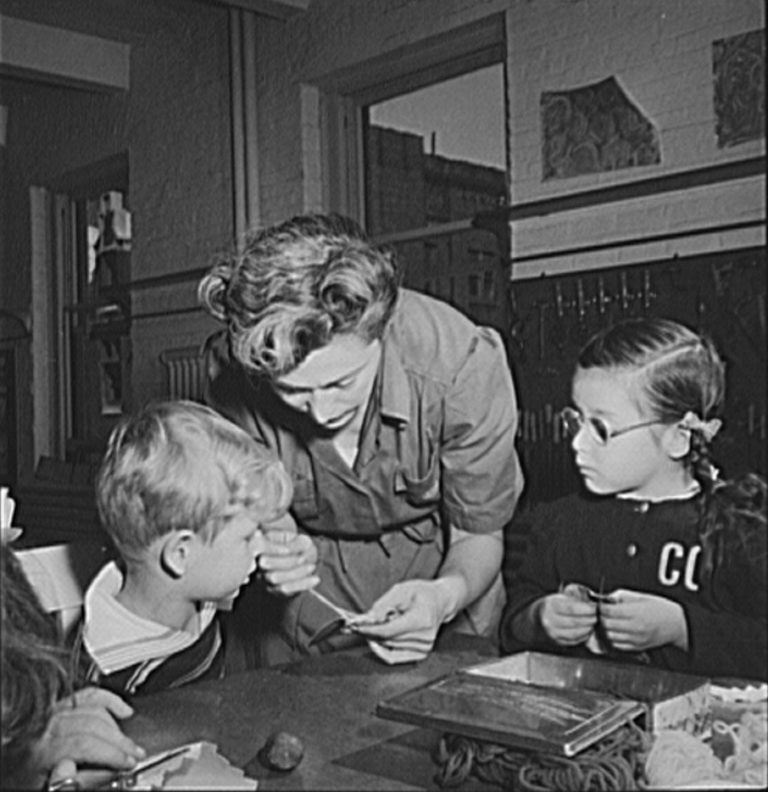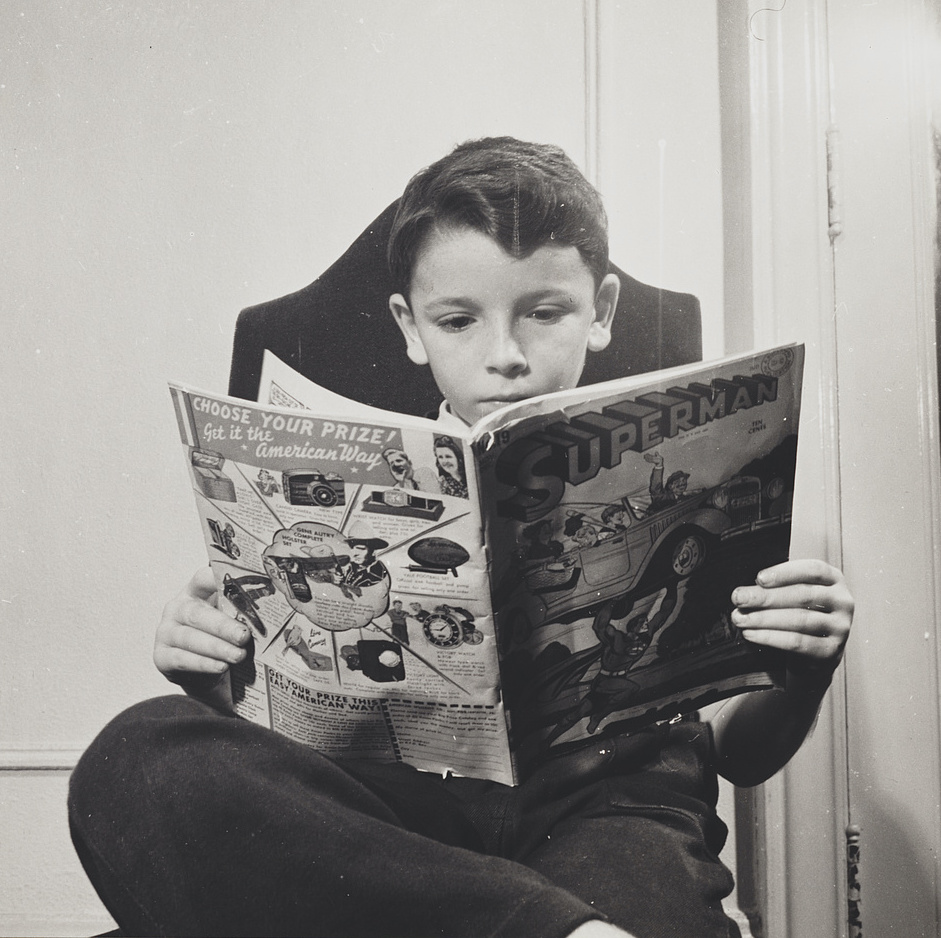Go-Betweens
A Miniseries on Youth, Migration, and Knowledge Transfer
With contributions by Simone Lässig, H. Glenn Penny, Elisabeth Engel, Brian Van Wyck, and Swen Steinberg.
The Welcome, a 1942 novel by Babette Deutsch for children around ten to thirteen, depicted a twelve-year-old Austrian refugee, Ernst Keller, in a New York public school.1 By this time, the author, of German-Jewish descent, already had a broader adult audience in the English-speaking world. She belonged to a progressive group of writers, critics, and poets; she translated German and Russian literature; and she had been teaching poetry at the New School for Social Research since 1933.2 Here she would have come in contact with fleeing scholars, first from Germany, later from all over Europe.3 In May 1940, at the latest, she got involved in refugee relief efforts in New York.4
Perhaps this is where she met Trude Frankl, to whom she dedicated The Welcome. Frankl, later remembered as a “fervent Zionist,” was a refugee reform pedagogue from Vienna.5 As a Kindertransport (refugee children transport) caretaker, she first went to Britain in 1939. With the help of Quaker organizations, she also brought refugee children to France. Later she arrived in New York, where she founded the Children’s Colony, a boarding home for unaccompanied minors who had fled Europe. This home had a nursery, a kindergarten, after-school programs, Saturday groups, children’s clubs, and summer camps. Deutsch described them all in The Welcome, as she also called the novel’s boarding home for refugee children.6
This fictional setting, informed and inspired by a real lifeworld, offers a window into the world of young refugees at this time. Like Simone Lässig, I am interested in these children as “historical actors who in varying ways and degrees were able to translate between cultures and produce new knowledge.” One contemporary observer, the Viennese reform pedagogue Ernst Papanek, realized already in the 1930s that unaccompanied, traumatized young refugees were self-directed.7 These members of Generation Exodus, as Walter Laqueur later labeled them,8 played an active role in the process of migration and came with a specific agency in knowledge-related processes that let them move between old orders of knowledge and new.9 Trude Frankl was already familiar with such ideas when she arrived in New York because she had previously worked with the exiled Papanek in France: She accompanied one Kindertransport to one of the eleven Montessori-inspired, direct-democratically organized children’s homes (Kinderhäuser) that Papanek had organized in France for about 1,600 refugees between 1938 and 1940.10

Ernst Keller as a Go-Between
Babette Deutsch’s novel initially portrays the young refugee Ernst Keller in his New York school as a “newcomer,” a “stranger” with an “outlandish accent,” a “pale and skinny” boy who “talks like a German” (6, 8–9). After having some trouble connecting with other kids, Ernst gets to know a boy the same age, Dwight “Thursty” Thurston. This is where the interactions of knowledge, youth, and forced migration become visible for the first time. Ernst tells Thursty the story of his father, a biologist and socialist, who was arrested by the Nazis and later died. His mother fell ill and managed to escape to England with Erica, Ernst’s twin sister. Thursty thinks about what he has learned from Ernst in relation to what he already knows from his own home. His father, also socialist, once mentioned that there are “57 varieties of socialists, including some fake ones like the Nazis, who were poison to the real kind.” Thursty wonders “what it would be like, going to jail for wearing a certain [party] button” (20–21). Ernst’s role in sparking this question on the basis of knowledge from his own experience make him a go-between in this story. He transfers his own experiential knowledge to Thursty.
Or perhaps we should think about in-betweenness as also encompassing Thursty. Throughout the book, we see him doing his own knowledge work, synthesizing what he has learned at home and from his interactions with Ernst and others at The Welcome. Thursty overhears Susi, the head of the children’s home (Trude Frankl’s character), tell a teacher about her own persecution, her escape, and the need for refugee relief in Europe (60–67). When Thursty visits Ernst in The Welcome, he witnesses unaccompanied refugee children “play bombing” and “visas”:
[T]hey have heard the fathers talking and worrying, they know too that this is an affair to get visas, that you are nearly strangled with a red tape. But without visas, they would not be here at all. Well, so they make a game.
Asked by Susi if he knows about the situation in “Nazi Europe,” Thursty reports he “had a vague recollection of stories that he had heard at the dinner table” at his own home (80–81).
Another motif in the novel is the meaning of “home.” Again and again, Thursty thinks about his home in New York, where he lives with his parents and sister, and he compares his situation to that of Ernst, who has no home and who has been separated from his parents and twin sister (30, 35, 68, 158–9). Here, knowledge from the refugee experience and emotions are closely linked, with Ernst again mediating. Through him, Thursty (and the reader) moves between the “normalcy” of role-model New York families and those torn apart in the refugees’ world.
Other Go-Between Roles and Situations
Americanization is another thread in the novel. The theme is clearest at school,11 but it occurs in the broader context of growing up in Manhattan, a world marked by comics, sodas, radio stories, Kodak cameras, and Disney movies. The school and its setting come together during an excursion that Ernst and Thursty’s class takes, a sort of New York city tour that combines local socio-critical knowledge about race, class, and American history (103–14). But Americanization is visible in more intimate ways too. These involve young migrants and their in-betweenness.
In the very beginning, Ernst became Thursty’s sidekick because of a class project. Together they have to draw a poster map of the United States with “pictures of American heroes”—whether real or fictional—from all the regions and states (9). This undertaking presents a challenge for both boys, one that involves not only history but also popular culture, especially youth culture. Ernst, for example, mixed up Paul Bunyan (of lumberjack lore) with John Bunyan (seventeenth-century author of Pilgrim’s Progress), and he does not understand why they should include the Lone Ranger, a popular fictional character who battled evil in the West on a radio program. Thursty explains, “the Lone Ranger’s greater than a lot of presidents, and all the vice-presidents, and he’s as American as––Thanksgiving.” Unfortunately, “Ernst knew nothing about Thanksgiving” either (22). Here the American boy, not the refugee, is the go-between. When it came to the transfer of cultural and everyday knowledge, such relationships between students might well have been at least as important for Americanization as the schools’ curricula ever were. And this process was much less steerable by institutions like schools with teachers and other staff serving as knowledge agents.
Another scene shows how Trude Frankl and others were already reflecting on assimilation through institutions. But such pedagogues, being refugees themselves, were also highly critical of what they saw. For example, when Ernst Papanek started planning his “Training Homes for Refugee Children” at the end of 1940 in New York, he entirely ignored the argument that unaccompanied minor refugees would be better assimilated in host families.12 In The Welcome, we can find the head of the refugee boarding home, Susi, arguing, “the little Austrians and Poles and French and Dutch” who “come to us . . . they have been pulled up by their roots.” And “our rich friends” in the United States “want us to clean off all that old soil with a scrubbing-brush and plant our children’s roots straight in American earth. You cannot do that!” (67). Later in the story, the refugee children from The Welcome advise the students in Ernst’s school in their preparation of the play “Christmas Everywhere.” In a resulting debate, Ernst’s American friends come to realize that there are no real “American” Christmas songs because “Americans come from pretty much everywhere; the only natives are the Indians” (170). In this way, a “boy from Warsaw” and refugee children from the Ukraine, Palestine, or France help students gain this specific cultural knowledge. They are able, as go-betweens in front of an American school audience themselves, to perform these songs as if they are “foreign . . . and quite new to them.” At the same time, Thursty tells the audience in the play’s introduction that “the words are different but they mean the same thing” (185, 194). Here, the migrant knowledge of the refugee go-betweens helped the students acquire something we call intercultural competence today.

Finding Go-Betweens in the Sources
Accessing young migrants’ knowledge is always connected to the question of available sources, an especially difficult problem when it comes to children’s agency and voices, or even just their visibility. A source like The Welcome can help. Such a fictional account, if taken seriously as testimony about the time in which its author created it, contains more than just knowledge about young migrants or knowledge for them. Deutsch presented the refugee Ernst Keller as an actor with a specific kind of agency, and as a go-between in different constellations. The reader finds him between generations, same-age students or friends, cultures, institutions, and even neighborhoods.13 Deutsch had a direct connection to the school through her friend, Trude Frankl, whose mediated experiences we cannot afford to ignore. Moreover, the Children’s Colony in New York was not the only educational institution that refugees set up for refugee children fleeing Nazi Germany and the places it invaded.14
Approaching young migrants’ knowledge requires creativity and a willingness to consider all manner of source types. What might we learn, for example, from photographs like the ones in this article, which come from a series of some seventy taken in the Children’s Colony in 1942? As Elisabeth Engel and Brian Van Wyck show in their contributions, we cannot take anything about schools as modern knowledge institutions for granted. Among other things, we must take the knowledge, attitudes, and motivations of the teachers into account when thinking about migrating children and knowledge. And we have to somehow get at the children’s own lifeworlds. The Welcome offers one way in.

Swen Steinberg is a post-doctoral researcher in the department of history at Queen’s University, Kingston, Ontario, and an affiliated scholar at the Pacific Regional Office of the German Historical Institute Washington. Besides co-editing this blog and organizing this miniseries, his most recent book is Refugees from Nazi-occupied Europe in British Overseas Territories, co-edited with Anthony Grenville. To contact him, write him @swensteinberg.bsky.social.
- Babette Deutsch, The Welcome, illustrated by Marc Simont (New York: Harper & Brothers, 1942). Age group for which it was marketed: “New Books for Young Readers,” New York Times, February 7, 1943, BR10. ↩︎
- Shirlee Emmons and Wilbur Watkin Lewis, Researching the Song: A Lexicon (New York: Oxford University Press, 2004), s.v. “Babette Deutsch,” 133. ↩︎
- See Simone Lässig, “Strategies and Mechanisms of Scholar Rescue: The Intellectual Migration of the 1930s Reconsidered.” Social Research: An International Quarterly 84, no. 4 (2017): 769–807. ↩︎
- Angelica Balabanoff to Babette Deutsch, May 31, 1940, in Babette Deutsch papers (MssCol 778), Box 2, New York Public Library. ↩︎
- Eva Brück, Im Schatten des Hakenkreuzes: Kindheit und Jugend 1926–1949 (Freiburg i.Br.: Ariman, 1993), 5. ↩︎
- Description of Trude Frankl’s work: Deutsch, Welcome, 60–67. Regarding unaccompanied minors, see Glenn Palmer’s case study: Reluctant Refuge: Unaccompanied Refugee and Evacuee Children in Australia, 1933–1945 (East Roseville: Kangaroo Press), esp. 103–23 on the Larino home for children in Melbourne, similar to the Children’s Colony in New York. ↩︎
- Ernst Papanek, Pädagogische und therapeutische Arbeit: Kinder mit Verfolgungs-, Flucht- und Exilerfahrung während der NS-Zeit, ed. Inge Hansen Schaberg, Hanna Papanek, Gabriele Rühl-Nawabi (Böhlau: Wien, 2015), 44–45. ↩︎
- Walter Laqueur, Generation Exodus: The Fate of Young Jewish Refugees from Nazi Germany (London: I. B. Taurus, 2004). ↩︎
- Simone Lässig and Swen Steinberg, “Why Young Migrants Matter in the History of Knowledge,” in “Knowledge and Young Migrants,” ed. Lässig and Steinberg, special issue, KNOW: A Journal on the Formation of Knowledge 3, no. 2 (Fall 2019): 195–219. ↩︎
- Inge Hansen-Schaberg, “Lebensgeschichtliche Hintergründe zur pädagogisch-politischen Arbeit Ernst Papneks und Anmerkungen zu seinem Werk,” in Papanek, Pädagogische und therapeutische Arbeit, 19; Ernst Papanek, Die Kinder von Montmorency: Ein Bericht über die von Ernst Papanek geleiteten Heime für Flüchtlingskinder in Frankreich während des Zweiten Weltkrieges: Chronik einer großen humanen Tat (Frankfurt a.M.: Fischer, 1980); and, for one Kindertransport biography, Lilly Maier, Athur and Lilly: Das Mädchen und der Holocaust-Überlebende (München: Heyne, 2018). ↩︎
- For a similar perspective on children’s reading rooms in New York City libraries, see Lässig and Steinberg, “Why Young Migrants Matter,” 207–13. ↩︎
- Papanek, Pädagogische und therapeutische Arbeit, 53. ↩︎
- Simone Lässig and Swen Steinberg, “Knowledge on the Move: New Approaches toward a History of Migrant Knowledge,” in “Knowledge and Migration,” ed. Lässig and Steinberg, special issue, Geschichte und Gesellschaft 43, no. 3 (2017): 330. For the aspect of agency, see also Lässig and Steinberg, “Why Young Migrants Matter,” 200–7. ↩︎
- Hildegard Feidel-Mertz, ed., Schulen im Exil: Die verdrängte Pädagogik nach 1933 (Rororo: Reinbek, 1983). ↩︎

Knowledge and the Agency of Children in Migration Contexts

Routes of Knowledge: Growing up German in Chile, 1900–50



